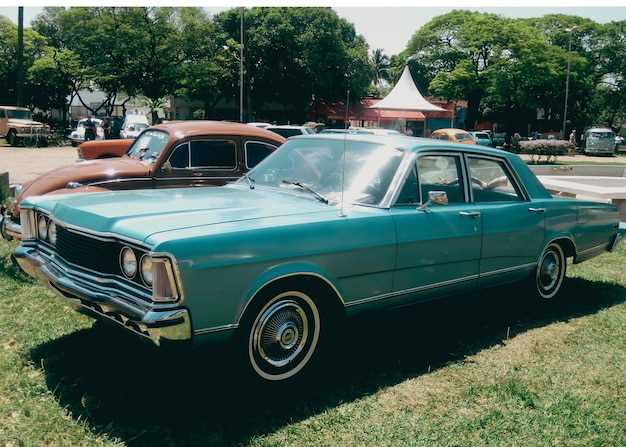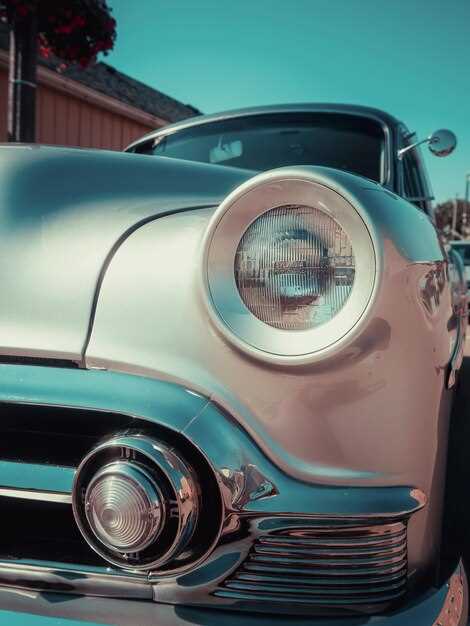
The 1970s marked a significant turning point in the American automotive landscape, particularly in the luxury car segment. Among the various manufacturers, Oldsmobile emerged as a pivotal player, introducing innovative designs and engineering techniques that would redefine what it meant to drive a luxury vehicle. With a commitment to performance combined with comfort, Oldsmobile crafted automobiles that resonated with the desires of consumers seeking sophistication and prestige.
During this era, the demand for luxury cars surged as buyers sought vehicles that reflected their status and offered an enhanced driving experience. Oldsmobile consistently delivered on these expectations, offering models that integrated advanced features, stylish aesthetics, and reliable performance. The brand’s commitment to quality and ingenuity set it apart from competitors, allowing it to carve a distinct niche in the crowded marketplace of the 1970s.
Oldsmobile’s influence extended beyond its own lineup; it shaped industry trends and standards for luxury automobiles. With innovations such as plush interiors, cutting-edge technology, and quieter rides, Oldsmobile not only attracted a loyal customer base but also inspired other manufacturers to elevate their offerings. Today’s understanding of luxury cars is heavily influenced by the standards set during this transformative decade, with Oldsmobile leading the charge.
How Oldsmobile Redefined Luxury Through Design Innovations

During the 1970s, Oldsmobile emerged as a pioneer in the luxury car segment through a series of remarkable design innovations. The brand’s commitment to blending performance, comfort, and elegance redefined the expectations of luxury vehicles in that era. Notably, Oldsmobile introduced the Cutlass model, which set new standards with its sophisticated styling and responsive handling.
One of Oldsmobile’s key design innovations was the incorporation of plush interiors. The use of high-quality materials, such as soft leather and rich wood accents, elevated the driving experience. Brand designers focused on creating a cocoon-like ambiance that enveloped passengers in comfort, making long journeys more enjoyable. Ergonomics also played a significant role, with thoughtfully designed controls and seats enhancing the overall usability of the vehicles.
Another significant advancement was the introduction of state-of-the-art technology, such as the optional Automatic Level Control system. This feature allowed for adjustments to the car’s suspension based on the load, ensuring a smooth ride regardless of the conditions. Such technology not only showcased Oldsmobile’s forward-thinking approach but also appealed to a clientele that valued both luxury and practicality.
Oldsmobile also focused on aerodynamics in their vehicle design. The sleek lines and subtle curves of their cars not only contributed to their aesthetic appeal but also improved fuel efficiency–a critical factor during the oil crisis of the 1970s. This innovation demonstrated the brand’s ability to adapt to changing societal needs while maintaining a luxurious feel.
Moreover, the company’s marketing strategy played a pivotal role in positioning Oldsmobile as a symbol of luxury. By emphasizing their unique design elements and features in advertising campaigns, they successfully attracted a demographic seeking refinement and innovation in their automobiles.
In conclusion, Oldsmobile’s design innovations during the 1970s redefined what luxury meant in the automotive world. Through a combination of aesthetic refinement, technological advancements, and a deep understanding of consumer desires, Oldsmobile not only set itself apart from competitors but also left a lasting impact on the luxury car market.
The Role of Oldsmobile in Shaping Consumer Expectations for Luxury Vehicles
In the 1970s, Oldsmobile played a significant role in redefining the concept of luxury automobiles. As a division of General Motors, Oldsmobile leveraged its long-standing reputation for quality and innovation to appeal to the changing preferences of consumers. This era marked a shift in automotive luxury, where performance was increasingly complemented by enhanced comfort, advanced technology, and sophisticated styling.
Oldsmobile’s introduction of features such as plush interiors, powerful yet smooth engines, and improved safety measures set new benchmarks for what consumers expected from luxury vehicles. The Cutlass, one of Oldsmobile’s flagship models, became emblematic of this evolution, blending aesthetic appeal with robust functionality. The vehicle’s success demonstrated that buyers were eager for more than just raw power; they sought a comprehensive driving experience that offered convenience and comfort.
The company also pioneered the use of advanced technology in its vehicles, showcasing innovations like automatic transmission and onboard climate control systems. These enhancements not only elevated the driving experience but also established a standard that competitors were compelled to meet. As Oldsmobile emphasized the overall lifestyle associated with luxury cars, consumers began to associate brand prestige with these technological advancements.
Moreover, Oldsmobile’s marketing strategies during this decade further heightened consumer expectations. By positioning its vehicles as symbols of success and sophistication, the brand managed to create aspirational value. Advertisements highlighted the luxurious features while also catering to the emotional aspects of ownership, leading to a stronger connection between consumers and their vehicles.
In summary, Oldsmobile’s contributions to the luxury car market in the 1970s were pivotal. By focusing on comfort, technology, and sophisticated design, the brand not only elevated its own status but also raised consumer expectations across the automotive industry. This shift in luxury perceptions influenced how manufacturers approached vehicle design and marketing in the years to follow, leaving a lasting legacy that continues to impact the luxury segment today.
Comparative Analysis of Oldsmobile Models and Competitors in the 1970s

In the 1970s, the luxury car market underwent significant changes, with Oldsmobile positioned as a key player amid fierce competition. Oldsmobile’s models, particularly the Cutlass and Ninety-Eight, stood out due to their blend of performance, comfort, and advanced features that appealed to a discerning audience.
Oldsmobile Cutlass emerged as a mid-size luxury vehicle that effectively balanced style and substance. Its sleek design and customizable options allowed it to resonate with consumers looking for a personalized luxury experience. Competitors such as the Pontiac Grand Prix and the Buick Regal offered similar features but often fell short in terms of overall refinement. While the Grand Prix leaned towards a sportier image, the Cutlass maintained a well-rounded luxury appeal, attracting diverse buyers.
Meanwhile, the Oldsmobile Ninety-Eight showcased the pinnacle of luxury during this decade. With its spacious interior adorned with high-quality materials and advanced technological features for the time, the Ninety-Eight competed directly with the Cadillac DeVille and Lincoln Continental. Although Cadillac commanded a stronger prestige, many consumers found the Ninety-Eight to offer comparable luxury at a more accessible price point. The emphasis on comfort and ride quality in the Ninety-Eight highlighted Oldsmobile’s dedication to the luxury segment.
In contrast, competitors such as Chrysler’s New Yorker brought innovative designs and opulent interiors, but often lacked the reliability that many Oldsmobile buyers valued. Furthermore, the Oldsmobile models incorporated a reputation for durability and dependability that garnered customer loyalty, differentiating them in a market rife with issues related to quality control from other manufacturers.
Although Oldsmobile faced challenges from emerging foreign luxury brands, its heritage and commitment to the American market set the stage for a distinctive identity. Overall, in the decadent landscape of the 1970s luxury car market, Oldsmobile’s models offered a competitive edge through a unique combination of style, comfort, and reliability, solidifying their place as formidable contenders against a variety of rivals.












